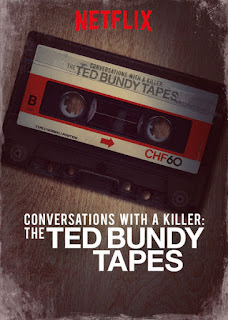1: On a lost gem, End of Part One

(I'm going to try and write 52 articles on TV in 52 weeks- lets see how this goes...)
The late 70s/early 80s were a turning point in terms of
mainstream comedy. What had been seen as ‘disgusting’, ‘nihilistic and cruel’
by its own production company in the earlier part of the decade, was now coming
into its own thanks in part to clubs such as The Comedy Store and a reaction
against comedians like Bernard Manning, whose racist and sexist act was
considered increasingly out of touch. This ‘New Wave’ would soon explode out of
the clubs and onto the television in the form of ‘The Young Ones’, ‘The Comic
Strip Presents…’ and ‘Not the Nine O’Clock News’, changing the face of tv
comedy forever. However, six months prior to the first episode of NTNON, another
sketch show was satirizing and challenging the televisual and sketch
conventions of the day.
This show was called ‘End of Part One’, and despite its
relative obscurity it proves to still be as entertaining and challenging today
as when it first went out. Beginning as radio sketch show ‘The Burkiss Way’,
and sharing some cast members (such as Denise Coffrey), the show could almost
be an exact continuation of ‘Monty Python’s Flying Circus’ which had ended some
seven years before- however, whilst that series luxuriated and pushed the
boundaries of the sketch format, EOP1 transferred this to a sitcom format. The
first series follows the exploits of Norman and Vera Straightman, who seem to
have stepped out of a Python ‘pepperpot’ sketch, complete with a dirty old man
(Mr Sprote of Hackney) as a pet and a cross-dressing accountant for a
neighbour. Similarly, the two characters occupy a bizarro world where
traditional sitcom tropes- such as a job interview- are turned on their head,
emphasised by a commitment to silly puns, wordplay and parodies that drop into
the programme from nowhere.
Although the loose format and uneasy tension between sketch
show and sitcom can sometimes hinder the production, as through difficult
transition from scene to sketch, the first series overall represents an
interesting experiment in pushing the boundaries of the sitcom and pioneering
the fourth-wall breaking, unpredictable style exploited later by ‘The Young
Ones’. The second series is however more streamlined and sketch-focused, though
still with an overarching theme or setting such as the ‘Bum Speeches’ awards,
allowing for parodies to intermingle and interlace with characters dropping in
and out of sketches and referencing other parts of the episode. This is similar
in style to the uneven fourth series of Python, but with a greater emphasis on
one-liners and quickfire jokes, which helps with pacing and papers over some
lags or weaker sketches. Therefore whilst the first series could be seen as
more experimental, the second series’ format is arguably stronger overall.
However, both series’ strength is in their playing with and parodying of Tv and televisual language. This is established from the first moments of episode one, wherein the LWT logo collapses midway through the ident and drones away. This is a programme never afraid to own its production conventions and rightly take the piss out of them- from mocking the boredom of in-vision continuity announcers to placing titles midway through the programme to tricking the audience with fake commercials or half-finished costume dramas, EOP1 is obsessed with what it can do with television as a format to create comedy. Much in the same way as The Young Ones would reference not being able to afford longshots or Python would discuss moving from video to film, the fact that this is a tv programme is integral to the production and to its jokes. Furthermore, the show would often parody programmes of the time with brilliant attention to detail and with a wide frame of reference- neither the BBC nor ITV are safe. Although references to ‘Return of the Saint’ and ‘Whodunnit’ are largely unintelligible for a modern audience, the love and care they’re given means that they remain funny independently and if you’ve seen the programmes you get an extra sense of enjoyment and of the commitment within the production to making thing as funny as possible.
This is also
emphasised by the excellent cast. Only Sue Holderness would go on to mainstream
success (in ‘Only Fools and Horses’) but all of them deserve it: full
commitment to even the smallest of roles mean that this team should be given
the same kudos as Atkinson, Stephenson and the rest. However, the ITV
scheduling means that the show was broadcast on Sunday afternoons- hardly peak
comedy viewing time and as a result, the programme has only a cult following,
but deserves more. EOP1 deserves to be seen as something that pushed the
boundaries of sketch comedy and sitcom as much as the programmes that preceded
and followed it, and did it with every reference possible to its medium and its
competitors. It’s still hilarious, and well worth a watch.


Comments
Post a Comment